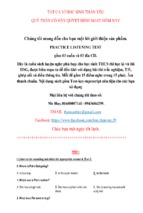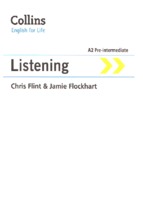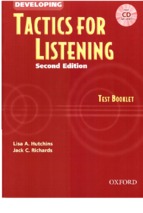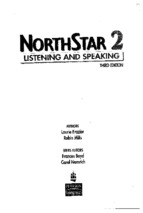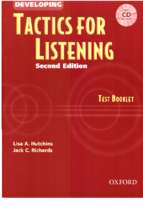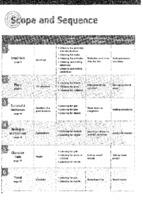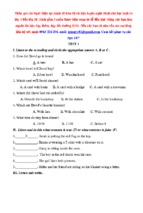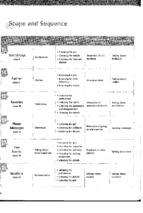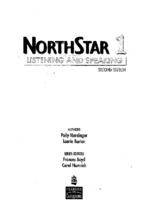Journai of Ship Researcii, Voi. 55, No. 3, September 2011, pp. 149-162
Journal of
Ship Research
Reduction of Hull-Radiated Noise Using Vibroacoustic
Optimization of the Propulsion System
Mauro Caresta and Nicole J. Kessissoglou
School of Mechanical and Manufacturing Engineering, The University of New South Wales, Sydney, Australia
Vibration modes of a submarine are excited by fluctuating forces generated at the
propeiier and transmitted to the huii via the propeiier-shafting system. The iow frequency vibrationai modes of the huii can result in significant sound radiation. This
work investigates reduction of the far-fieid radiated sound pressure from a submarine
using a resonance changer implemented in the propulsion system as well as design
modifications to the propeiier-shafting system attachment to the hull. The submarine
hull is modeled as a fluid-loaded ring-stiffened cyiindricai sheii with truncated conical
end caps. The propeller-shafting system is modeled in a modular approach using a
combination of mass-spring-damper eiements, beams, and sheiis. The stern end
piate of the hull, to which the foundation of the propeller-shafting system is attached,
is modeied as a circular plate coupied to an annular plate. The connection radius of
the foundation to the stern end plate is shown to have a great infiuence on the
structural and acoustic responses and is optimized in a given frequency range to
reduce the radiated noise. Optimum connection radii for a range of cost functions
based on the maximum radiated sound pressure are obtained for both simple support
and clamped attachments of the foundation to the huii stern end plate. A hydraulic
vibration attenuation device known as a resonance changer is implemented in the
dynamic model of the propeiier-shafting system. A combined genetic and pattern
search aigorithm was used to find the optimum virtual mass, stiffness, and damping
parameters of the resonance changer The use of a resonance changer in conjunction
with an optimized connection radius is shown to give a significant reduction in the iow
frequency structure-borne radiated sound.
Keywords: vibrations; noise; propuision; ship motions; loads
1. Introduction
ROTATION OF a submarine propeller in a spatially nonuniform
wake results in fluctuating forces at the propeller blade passing
frequency (Ross 1976). This low frequency harmonic excitation is
transmitted to the submarine hull by the propeller-shafting system
(Kane & McGoldrick 1949, Rigby 1948, Schwanecke 1979).
Early work to reduce the transmission of axial vibrations to the
hull include increasing the number of propeller blades (Rigby
1948), modifying the hydrodynamic stiffness and damping of the
thrust bearings (Schwanecke 1979), implementation of a hydrauManuscript received at SNAME headquarters February 28, 2010: revised
manuscript received October 3. 2010.
SEPTEMBER 2011
lie vibration absorber in the propeller-shafting system (Goodwin
1960), and application of active magnetic feedback control to
reduce the axiai vibrations of a submarine shaft (Parkins & Homer
1989). Goodwin (1960) examined reduction of axial vibration
transmitted from the propeller to a submerged hull using a resonance changer that acts as a hydrauiic vibration absorber, using a
simplified spring-mass model of the propeiier-shafting system
with a rigid termination. The resonance changer is designed as a
hydraulic cylinder connected to a reservoir via a pipe. Goodwin
developed expressions to descdt)e the virtual mass, stiffness, and
damping of the resonance changer in terms of its dimensions and
properties of the oil contained in the reservoir. In recent work on
the resonance changer, a dynamic model of a submarine hull in
axisymmetric motion was coupled with a dynamic model of a
0022-4502/11/5503-0149$00.00/0
JOURNAL OF SHIP RESEARCH
149
propeller-shafting system (Dylejko 2007). Optimum resonance
changer parameters were obtained from minimization of the hull
drive-point velocity and structure-bome radiated sound pressure.
The radiated sound power with and without the use of a resonance
changer has also been investigated using an axisymmetric fully
coupled finite element/boundary element (FE/BE) model of a
submarine, in which the hull was excited by structural forces
transmitted through the propeller-shafting system and acoustic
excitation of the hull via the fluid in the vicinity of the propeller
(Merz et al. 2009).
The structural and acoustic responses of a submarine hull have
been presented previously by the authors (Caresta & Kessissoglou
2009, 2010). In Caresta and Kessissoglou (2009), the hull was
modeled as a fluid-loaded cylindrical shell with internal bulkheads
and ring stiffeners and closed at each end by circular plates. The
far-field radiated sound pressure was approximated using a model
in which the cylinder was extended by two semi-infinite rigid
baffles. The effect of the various complicating effects such as the
bulkheads, stiffeners, and fluid loading on the vibroacoustic
responses of the finite cylindrical shell was examined in detail.
In a later paper (Caresta & Kessissoglou 2010), the authors
presented a similar model of a finite fluid-loaded cylindrical shell
that was closed at each end by truncated conical shells. Harmonic
excitation of the submerged vessel in both the axial and radial
directions was considered. The forced response of the entire vessel
was calculated by solving the cylindrical shell equations with a
wave solution and the conical shells equations using a power
series solution, taking into account the interaction with the external fluid loading. Once the radial displacement of the whole
structure was obtained, the surface pressure was calculated by
discretizing the surface. Using a direct boundary element method
(DBEM) approach, the sound radiation was then calculated by
solving the Helmholtz integral in the far field. The contribution
of the conical end closures on the radiated sound pressure was
observed. The results obtained from this semianalytical model
were compared with results obtained from a fully coupled finite
element/boundary element model and was shown to give reliable
results in the low frequency range.
In this paper, a dynamic model of the propeller-shafting system
is coupled with the hull dynamic model presented previously by
the authors (Caresta & Kessissoglou 2009). While previous work
in Dylejko (2007) and Merz et al. (2009) modeled the connection
between the foundation of the propeller-shafting system and the
pressure hull using a rigid end plate, here a more realistic flexible
plate is used. The foundation of the propeller-shafting system is
coupled to the hull by means of the stem end plate, which is
modeled as a circular plate coupled to an annular plate. Two types
of connection between the foundation of the propeller-shafting
system and the hull stem end plate are considered, corresponding
to simply supported and clamped boundary conditions. The results
presented here examine the influence of the flexibility of the end
plate, different types of connection, and the radius of the connection location on the vibroacoustic responses of the submarine. The
use of a resonance changer implemented in the propeller-shafting
system in conjunction with the flexible end plate to attenuate the
structural and acoustic hull responses is presented. In Merz et al.
(2009), the resonance changer parameters were optimized using
gradient-based techniques, since genetic algorithms are not viable
for coupled FE/BE models because of their high computational
cost. In this work, a semianalytical model is used, and the virtual
150
SEPTEMBER 2011
mass, stiffness, and damping parameters of the resonance changer
are optimized with a new approach by combining genetic and
pattern search algorithms. The flexible stem end plate is shown
to have a significant influence on the structural and acoustic
responses of the submarine, due to the change in force transmissibility between the propeller-shafting system and the hull. The
connection radius is then optimized by minimizing the far-field
radiated sound pressure in a wide frequency range or at discrete
frequencies. The use of a resonance changer implemented in the
propeller-shafting system is investigated initially considering a
rigid attachment to the hull, as done in Dylejko (2007) and Merz
et al. (2009), and then using the attachment at the optimum connection radius. The resonance changer acts as a dynamic vibration
absorber and introduces an extra degree of freedom in the propeller-shafting system. The parameters of the resonance changer are
tuned to a single frequency. It is shown that the flexibility of the
end plate and attachment of the propeller-shafting system to the
hull at the optimum connection radius, combined with the use of a
resonance changer, results in very good reduction of the radiated
sound pressure over a broad frequency range.
2. Dynamic model of the submarine
In this paper, a dynamic model of the propeller-shafting system
is coupled with the hull dynamic model presented in Caresta and
Kessissoglou (2010) for axisymmetric motion only. The low frequency dynamic model of a submarine hull is approximated: The
main pressure hull is modeled as a finite cylindrical shell with ring
stiffeners, intemal bulkheads, and end caps. The end caps are
modeled as truncated conical shells that are closed at each end by
circular plates. The entire structure is submerged in a heavy fiuid.
A schematic diagram of the submarine model is shown in Fig. 1.
The propeller-shafting system is located at the stem side of the
submarine. The propulsion forces generated by the fluctuating
forces at the propeller are transmitted to a thrust bearing located
along the main shaft. The thrust bearing is connected to the foundation, which in turn is attached to the stem end plate. A schematic diagram of the propeller-shafting system is shown in Fig, 2.
The flexible end plate is modeled as a circular plate coupled to an
annular plate, where the annular plate is attached to the cylindrical
hull.
2.1. Cylindrical shell
The fluctuating propeller forces, arising from its rotation
through a spatially nonuniform wake field, are transmitted
through the propeller-shafting system and result in axial excitation
of the hull. A detailed dynamic model of the submarine hull under
axial and radial harmonic excitation was previously presented by
the authors (Caresta & Kessissoglou 2010), This model is briefiy
reviewed here for axisymmetric motion and then coupled to a
Cylindrical shell
Truncaled aine
-^I.V)
(21
Shaliing system
Stiffeners
Fig. 1
Knd piales
Diagram of the submarine hull
JOURNAL OF SHIP RESEARCH
Conical shell
Shaft
Cylindrical shell
the radiation damping. Furthermore in the low frequency range,
the axial wave number is supersonic and the fiuid introduces
mainly a damping effect. Hence at low frequencies, the results
from the fiuid-structure interaction problem for an infinite cylindrical shell can be used to estimate the fiuid loading for a finite
cylindrical shell. The external pressure p can be written in terms
of an acoustic impedance Z by (Junger & Feit 1986)
Circular plate
Propeller
p = Zw =
Annular plate
Foundation (rigid)
Thrust Bearing
Fig. 2
Diagram of the propelier-shafting system
dynamic model of the propeller-shafting system. Flügge equations
of motion were used to model the cylindrical shell. T-shaped ring
stiffeners are included in the hull model using smeared theory, in
which the mass and stiffness properties of the rings are averaged
on the surface of the hull (Hoppmann 1958). The smeared theory
approximation is accurate at low frequencies where the structural
wave numbers are much larger than the stiffener spacing. The
Flügge equations of motion for axisymmetric motion of a ringstiffened fluid-loaded cylindrical shell are given by (Caresta &
Kessissoglou 2010)
(4)
-w
Pf is the density of the fluid, to is the angular frequency, anáj is the
imaginary unit, k and /.>, are respectively, the axial and the acoustic wave numbers. Wo is the zero-order Hankel function of the
first kind, and H'Q is its derivative with respect to the argument.
The validity of the approximation for the fiuid loading is shown
in Caresta and Kessissoglou (2010), where structural and acoustic
responses were compared with results from a fully coupled FE/BE
model. Results showed that for a large submarine hull in the low
frequency range, an infinite fiuid-loaded shell model gives reliable results; hence a fully coupled model is not necessary. In
addition, the analytical method presented here is computationally
faster than a fully coupled FE/BE model, thus providing an advantage for a vibroacoustic optimization routine.
2.2. Circular and annular plates
àu
VOM
2 ^ ^
y ^"
vdu
(1)
= 0
(2)
The end plates and bulkheads were modeled as thin circular
plates in both in-plane and bending motion. The stem end plate is
modeled as an internal circular plate coupled to an annular plate.
For the annular plate, w^ and w^ are, respectively, the axial and
radial displacements. For axisymmetric motion, the equations of
motion for the annular plate are given by (Leissa 1993a)
M and w are the axial and radial components of the cylindrical shell
displacement in terms of the axial coordinate .v, which originates
r2 r dr )
D^ dt^ ~ ' dr\dr
r)
at the stem side of the main cylindrical hull, a is the mean radius
of the shell, and h is the shell thickness. CL = [Ê/p(l - v')]"^ is
the longitudinal wave speed. £, p, and v are, respectively, the
Young's modulus, density, and Poisson's ratio of the cylinder. r is the plate radius, and h¡, is the plate thickness.
The coefficients ß, 7, d(,, and d^ are given in Appendix A in
accordance with Caresta and Kessissoglou (2010). The axial and
radial displacements for the cylindrical shell can respectively be is the flexural rigidity, and
written as (Leissa 1993b)
u(x,t) =
', w{x, 0 =
1 =1
(3)
C, = Ui/W, is an amplitude ratio and U¡, W¡ are the wave amplitude
coefficients of the axial and radial displacements, respectively. In
equation (2), p is the external pressure from the surrounding
water. The fluid-structure interaction problem can only be analytically solved for infinite cylindrical shells, in which the axial
modes are uncoupled as in the in vacuo case. For a finite shell,
coupling between axial modes occurs and the acoustic impedance has both self and mutual terms. This aspect makes the problem analytically nondeterminate. However, a finite cylindrical
shell can be approximated by extending the cylinder by two
semi-infinite rigid baffles (Junger & Feit 1986). Junger and Feit
(1986) showed that mutual reactances are generally negligible.
Mutual resistances are negligible for supersonic modes and even
for slow modes when structural damping is sufficient to dominate
SEPTEMBER 2011
r ^ dt'^ ~
(5)
is the longitudinal wave speed, where £a, Pa> and Va are the
Young's modulus, density, and Poisson's ratio, respectively. General solutions for the axial and radial displacements of the annular
plate are, respectively, given by (Leissa 1993a)
H'a(r,i) =
(6)
(7)
and ¿aL =
are the wave numbers for the bending and in-plane waves. J^), [Q,
YQ, and KQ are the zero-order Bessel and modified Bessel functions of the first and second kind (Abramowitz & Stegun 1972).
The coefficients /4, (/ = 1 : 4) and ß, (( = 1 : 2) are determined
JOURNAL OF SHIP RESEARCH
151
from the boundary conditions. For a full circular plate, similar
expressions for the axial Wp and radial «p displacements as given
by equations (6) and (7) for an annular plate can be used, where
the coefficients A3, A4, and ¿2 are set to zero.
2.3. Conical end caps
The equations of motion for the fluid-loaded conical shells are
given in terms of u^ and w^ that are, respectively, the orthogonal
components of the displacement in the axial and radial directions.
The axial position, x^, is measured along the cone's generator
starting at the middle length, and M\, is directly outward from the
shell surface. Fluid loading was taken into account by dividing the
conical shells into narrow strips that were considered to be locally
cylindrical. The equations of motion to describe the dynamic
response of a conical shell under fluid loading are given by
'a
sm a cos a
R
Vc COS a dUc
R
—
1 d^u.
ç) ] •
l [X,)
(11)
(8)
2.4. Propeller-shafting system
cos- a
sm a cos a
^0
z
= [«cl (Xc)
where Uci(Xc) and WdiXc), (( = I : 6), are base functions arising
from the power series solution (Caresta & Kessissoglou 2008). v^
is a vector of six unknown coefflcients that are determined from
the boundary conditions.
Ve cos a ñWc
í—«c H
R
by matching terms of the same order for the axial position x^. The
recurrence relations allow the unknown constants of the power
series expansion to be expressed by only eight coefflcients that
can be determined from the boundary conditions of the conical
shell. A mathematical procedure to describe the vibration of a
truncated conical shell in vacuo using the power series approach
is initially presented by Tong (1993) for shallow shell theory. This
approach has been modified by the authors to consider a truncated
conical shell with fluid loading (Caresta & Kessissoglou 2008).
The axial and radial conical shell displacements can be then
expressed as
"c
Î;:^—1
Pc
= 0
(9)
where
sin a d
dx¡ ' R
dx¡:
a is the semivertex angle of the cone. R is the radius of the cone at
location Xc.
The propeller-shafting system consists of the propeller, shaft,
thrust bearing, and foundation and is modeled in a modular
approach using a combination of spring-mass-damper elements
and beam/shell systems, as described in Merz et al. (2009). Mpr is
the mass of the propeller, which is modeled as a lumped mass at
the end of the shaft, as shown in Fig. 3. The shaft is modeled as a
rod in longitudinal vibration. The connection of the thrust bearing
on the shaft is located at x^t = L^i. Hence, the shaft dynamic
response is obtained by separating the shaft in two sections. The
motion is described by the displacements «,, and u^2 along the Xs\
and .Ys2 coordinates, respectively. The equation of motion for the
shaft in longitudinal vibration is given by
i
is the longitudinal wave speed. E^, pc, /¡c, and v^ are, respectively,
the Young's modulus, density, thickness, and Poisson's ratio of
the conical shell. Similar to the cylindrical shell, the external
pressure p^ on a conical shell due to the surrounding water can be
written in terms of an acoustic impedance Z^ by
Pc=Z,w,
(10)
The impedance Z^ is similar to that given by equation (4), with the
mean radius of the cylindrical shell, a, replaced by the mean
radius of the conical shell, /?(,. The validity of the fluid-loading
approximation for a conical shell in the low frequency range is
presented in Caresta and Kessissoglou (2008), in which results for
the structural responses of a large truncated cone with different
boundary conditions obtained analytically are compared with
those from a fully coupled FE/BE model. At low frequencies, the
conical shells behave almost rigidly and the axisymmetric motion
is supersonic. The effect of the fluid loading is mainly a radiation
damping, and its effect is small compared with the structural
damping. At higher frequencies or using a cone with a larger
semivertex angle, the approximation for the fluid loading could
lead to errors. The axial-dependent component of the orthogonal
conical shell displacements are expanded with a power series.
Substituting the power series solutions into the equations of
motion, two linear algebraic recurrence equations are developed
152
SEPTEMBER 2011
(13)
^ is the longitudinal wave speed. E^ and p» are the
Young's modulus and density of the shaft. The general solution
for the longitudinal displacement for the two sections / of the shaft
is given by
«„(AS,,Í) = {A,ie-^'''" + ß,-e'**)e-^"', / = 1,2
Fig. 3
(14)
Displacements and coordinate system for the propeller-shafting
system
JOURNAL OF SHIP RESEARCH
where k^ = W/CSL is the axial wave number of the shaft. The thrust
bearing dynamics can be modeled as a single degree of freedom
system of mass Mt,, stiffness K^,, and damping coefficient Cb. The
foundation is modeled as a rigid cone which function is to transmit
the force to the end plate. /?ap is the connection radius between the
foundation and the plate. Also shown in Fig. 3 is a resonance
changer that is a hydraulic device located between the thrust
bearing and the foundation. The resonance changer is modeled as
a single degree of freedom system of virtual lumped parameters
connected in parallel (Goodwin 1960), denoted by mass M^, stiffness Kr, and damping coefficient C^. Its motion is described by
coordinate ll^,. In the absence of a resonance changer, «b = Wp.
4)^ = dwjdxç for the conical shell. To take into account the change
of curvature between the cylinder and the cone, the following
notation was introduced
«c = "c cos a — w'c sin a,
H'C
= w,. cos a + Uç sin a
/Vrc = Wjccosa — Vv.c sina, V'^c = Kt,c cos a-I-A^^ ^ sin a (16)
At junction (2) in Fig. 1, the continuity conditions between the
cone, annular plate, and cylindrical shell are given by
U = Uç=W^, H'= H'c = Ma, cf) = (t)c = -(}>a
N, + /V,,c - Af,,a = 0,M,-
(17)
M,,c + M,,a = 0, V^ - V,,e - /V,,a = 0
(18)
2.5. Boundary and continuity conditions for the hull
The dynamic response of the submarine structure is expressed
in terms of W¡ (i = 1 : 6) for each section of the hull, Aj (/ = 1 : 4)
and B, (/' = 1 : 2) for each circular plate, x^. for each piece of
frustum of cone, and A^,, B^, (/ = 1 : 2) for the shaft. The dynamic
response is calculated by assembling the force, moment, displacement, and slope continuity conditions at each junction of the hull
(corresponding to junctions 2 to 5 in Fig. 1), as well as the boundary conditions of the hull (junctions 1 and 6). The positive directions of the forces, moments, displacements and slopes are shown
in Fig. 4. The membrane force N^, bending moment My, transverse
shearing force Qy, and the Kelvin-Kirchhoff shear force V^ for the
cylindrical shell, conical shells, and circular plates can be found in
Caresta & Kessissoglou (2010), where the forces and moments
are given per unit length. The slopes are given by p, ^v.p. M^p, A'r.p). At the cylindrical shell/
circular plate junctions corresponding to junctions (3) and (4) in
Fig. 1, similar expressions for the continuity conditions are used in
which the conical shell terms are omitted. Likewise, for the
boundary conditions at the free ends of the truncated cones
corresponding to junctions (1) and (6) in Fig. 1, similar expressions for the continuity conditions between the conical shells and
circular plates are used in which the cylindrical shell terms are
omitted.
The continuity equations between the propeller-shafting system
and the hull in the absence of a resonance changer are initially
presented. The boundary and continuity conditions for the shaft of
cross-sectional area A^ are given by
=0,^,1=0
(19)
(20)
(21)
- M'-)] =
= O, r = /?a
Fig. 4
Positive direction of forces, moments, dispiacements, and slopes
for the cyiindricai sineii, conicai siieii, and circuiar piates
SEPTEiVIBER 2011
The shaft is attached to the power system by means of a flexible
joint, resulting in the free end boundary condition given by
equation (20). In equation (19), «s is the shaft acceleration. The
propeller is modeled as a rigid disc of radius a^,, immersed in
water. The mass load of the fluid can be calculated from the
radiation impedance and is given by M„ = S/3a^^pf (Fahy 1985).
The mass of water M^ is added to the propeller mass Mp^,
resulting in Mpr = Mp^ + M« (Merz et al. 2009). Equation (21)
describes the continuity of axial force at the junction of the thrust
bearing along the propeller shaft.
At the attachment location between the foundation of the propeller-shafting system and the hull stem end plate (/• = /?ap)- two
different types of connections are considered corresponding to a
"soft" connection and a "hard" connection. The soft connection
implies that only an axial force is transmitted from the foundation;
that is, the connection between the foundation and end plate is a
simple support. This connection can be realized by means of an
attachment that would be rigid only under axial motion. In the
case of a hard connection, the foundation is clamped to the plate.
JOURNAL OF SHiP RESEARCH
153
At r = /?ap, the boundary conditions for a soft connection are
given by
(22)
= 0,
integral with a direct boundary element method. The far field is
defined in polar coordinates (R^, (^r) with the origin set at the
geometric center of the hull. The sound pressure is given by
(Skelton & James 1997)
1
H'a(r) = Wp(r) = «si(x,i), x,i = Ls,
(23)
Nr,a(r) - Air,p(r) = 0, M,,a(r) - W,,p(r) = 0
(24)
u,(r) = «p(r), c^ai/-) = ct)p(r)
(25)
Equations (22) to (25) represent the continuity of displacement,
slope, force, and bending moment between the circular and annular plates. For a hard connection, the boundary conditions at
r = /?ap given by equations (24) and (25) are substituted by
Ma(r) = «p(r) = 0, a(/-) = c|>p(r) = 0
(26)
When a resonance changer is introduced in the propeller-shafting
system, equations (21) and (22), respectively, become
--(Kb-ß
)[«s
- «b] =
0,r =
(27)
- «b] = 0
{N,.,(r) - N.,p
(28)
where KRQ = f^r — J^C^ — w'^Mp An extra equation is also
introduced for the resonance changer displacement u^.
cosß,
Y(ro, zo) = p(ro,
dZn
(31)
sin
, cos
(32)
The surface of the hull is represented in Cartesian coordinates
(;•, Zr) where z^ is in the axial direction with its origin set at the
geometric center of the hull, (r, Zr) is the node location on the hull
surface SQ. oir = kf cos <^r< 7r = ^f sin (|)r, and ßr is the slope of the
hull surface, if is the speed of sound in the fluid, /Q is the derivative with respect to the argument of the zero-order Bessel function
Jo. Once the radial displacement M'N(/'O,Z()) is known at each node
location on the hull boundary, the shell surface pressure p(rQ,Zo)
at each node on the shell surface can then be calculated by
p = D W N , where D is the fluid matrix and p, WN are, respectively,
the vectors of the surface pressure and displacement (Caresta &
Kessissoglou 2010). The integral in equation (31) is evaluated
numerically using an adaptive Gauss-Kronrod quadrature, by separately considering the contribution of each section of the submarine corresponding to the conical and cylindrical shells.
4. Results
(Kb -jtí)Cb)\uh - «si(j^si)] +KYi,c[ub - H'p('-)] +Mbüb = 0
(29)
The boundary and continuity equations for the entire hull and
between the hull and propeller-shafting system are arranged in
matrix form Bx = 0, where x is the vector of unknown
coefficients. The vanishing of both the real and imaginary parts
of the determinant of B gives the natural frequencies of the system. The location of the natural frequencies can be conveniently
checked from the local minima of the absolute value of the
determinant, because of the complex nature of the matrix B and
its determinant. The steady-state response of the hull under
harmonic axial force excitation from the propeller can be calculated using a direct method in which the force is considered as part
of the boundary conditions. Under a harmonic axial force, the
boundary condition of the shaft corresponding to equation (19)
becomes
_ Ai ¿¿3, (x,^ ) =
x,, = 0
(30)
The boundary and continuity equations can be arranged in matrix
form Bx = F, where F is the force vector with only one nonzero
element corresponding to the force amplitude Fo. From x = B~ ' F ,
the unknown coefficients of the various plate and shell displacements can be obtained.
3. Far-field sound pressure
A detailed acoustic model of a submarine was previously
presented by the authors (Caresta & Kessissoglou 2010). The
radiated sound pressure was calculated by solving the Helmholtz
154
SEPTEMBER 2011
Results are presented for a submarine and its propeller-shafting
system using the data presented in Table 1.
To account for the onboard equipment and ballast tanks in the
cylindrical section of the hull, a distributed mass on the shell of
Weq = 1500 kg/m* was used (Tso & Jenkins 2003). All the structures are made of steel. Structural damping was introduced using a
complex Young's modulus £.^ = £(1 —jr\), where TI = 0.02 is the
structural loss factor. A unity axial harmonic force from the propeller was used to excite the hull. In a real submarine, the harmonic excitation from the propeller is tonal at the blade passing
frequency. Superharmonics with smaller amplitude would also
appear in the spectrum of the propeller force.
4.1. Effect of the connection radius on the structural and
acoustic responses
The resonance changer is initially not included in the following
results. For a hard connection in which the foundation is considered clamped to the stem end plate, the frequency response function (FRF) of the axial displacement at junction 2 is shown in
Fig. 5, for different values of the connection radius Äap. The first
two axial resonances of the hull are located at around 22 and
44 Hz. The amplitudes at resonances are affected by the damping
effect of the fluid loading and become smoother as the frequency
increases. The lowest frequency peak is due to the resonance of
the end plate and corresponds to large deformation of the annular plate. As the connection radius becomes larger, this resonance shifts to higher frequencies, increasing from 2.8 Hz for
Äap = 0.5 m to 14.7 Hz for R^p = 2.5 m. Furthermore, for larger
values of /?ap, the deformation of the inner circular plate relative to
the annular plate increases, as shown in Fig. 6. Other peaks in
JOURNAL OF SHIP RESEARCH
Tabie 1
Parameters of the submarine huli and propeiier-shafting
system
«^ = 0.5m,/=2.8Hz
Stiffeners
Cylindrical shell
Bulkheads and end
plates
End cones
Propeller-shafting
system
Thrust bearing
Shaft
Properties for steel
Properties for
exterior fluid
Type
Cross section
Moment of inertia
Torsion constant
Spacing h
Thickness h
Length ¿
Radius
Thickness /ip
Semi-vertex angle a
Thickness h^
Small radius
Propeller mass A/p,
Mass of water displaced M„
Mass Mh
Stiffness Kf,
Damping coefficient Cb
Length of shaft section 1 L^i
Length of shaft section 1 L,2
Radius
Density p
Poisson ratio v
Young's modulus E
Density pf
Speed of sound C[
T section
509 X 10"' m^
2.3764 X 1 0 ' m"
9.8567 X 10 ^m"
0.5 m
0.04 m
45 m
3,25 m
0.04 m
18»
0.014 m
0.50 m
10" kg
11.443 X 10'kg
(Merz et al. 2009)
200 kg
2 X 10'" N/m
3 X 10'kg/s
9.0 m
1.5 m
0.15 m
7,800 kg/m-'
0,3
2.1 X 10"
1,000 kg/m'
1,500 m/s
the FRFs at 9 and 36 Hz are due to the bulkhead resonances and
are unaffected by the location of the connection radius. In general,
as the connection radius increases and approaches the hull radius
(^ap -^ «). higher amplitudes of the FRFs are observed. This
occurs because force is transmitted to the hull more directly,
without being filtered by the transmissibility of the end plate.
The dynamic behavior of the end plate at its second resonance
is more complex, as shown in Fig. 7. For increasing values of R^p,
the resonant frequency increases and then decreases. The decrease
in the resonant frequency occurs when the connection radius
approaches the antinodes of the plate deformation, resulting in a
greater structural response.
R__^=1.0m,/=3.8Hz
R^=l.5m./=5.5Hz
- -
R =2.0m,/=8.8Hz
ap
R^ = 2.5m,/=14.7Hz
Fig. 6 Operating deformation shape of the stern end plate at its first
resonance. Location of the connection radius is shown by a cross. The
undeformed plate is also shown as a dashed bold line. As the connection
radius increases, the deformation of the inner circular plate relative to
the annular plate also increases
The complexity of the change in resonance location as the
connection radius increases from a small value of R¡,p = 0,5 m to
the maximum value of R.^p = a can be observed in Fig. 8. This
figure presents a contour plot of the frequency response function
in terms of the connection radius and frequency. The resonances
and antiresonances are shown by white and black lines, respectively. The left white branch presents the increase of the fundamental plate resonance as both the connection radius and
frequency increases. At around R^p = 2,5 m, the plate resonance
is interrupted by the intersection of an antiresonance that increases
with frequency as the connection radius becomes smaller. The
other two white branches correspond to higher resonances of the
end plate.
The maximum radiated sound pressure is defined as
/'max = „ max
p{R)
In the far field at /f = 1000 m, the maximum sound pressure level
(SPL) for different values of the connection radius /?ap ranging
from 0.5 to 3,0 m is shown in Figs. 9 and 10 for hard and soft
connections, respectively. The main hull axial resonances occur at
around 22, 44, and 70 Hz for all values of the connection radius,
except for values around R^p = 2,5 m due to the interaction of the
hull with the end plate vibration. The second and third hull axial
resonances are less evident due to the structural and radiation
damping. The small peaks visible at 9 and 36 Hz are due to the
3
R
= I.Oin
/=l.5iii
2
- - *„^»2.0™
R^^ = 2.5 m
R = 3.0 m
E
'
ji
0
ap
= l,0m./=4i).I Hz
2 -1
= 2.0 m ./= 26.3 Hz
R
ap
30
40
50
Frequency [Hz]
-O^m i'-?74H
ap
-7
= 2.5 m ./= 19.5 Hz
-3
Fig. 5 Frequency response function of the axial displacement for the
cylinder at x = 0 for different values of the connection radius. The lowest
peak is due to the resonance of the end plate and corresponds to large
deformation of the annular plate. As the connection radius increases,
this resonance shifts to higher frequencies
SEPTEIUIBER2011
-2.5
Fig. 7
-2
-15
-1
-0.5
Displacements w , w^ [ml
0
0.5
^ ^Q-^
Operating deformation shape of the stern end plate at its second
resonance
JOURNAL OF SHiP RESEARCH
155
p
ap
= 0.5
R = 1.0
R = 1.5
D
'•5
Rap = 2.0
R = 2.5
ap
- - - % = 3.0
30
40
50
Frequency [Hz]
30
40
50
Frequency [Hz]
lu
Fig. 8
60
70
80
Contour piot of the frequency response as a function of the
connection radius and frequency
out-of-plane vibration of the bulkheads and end plates. The bulkhead resonances do not significantly contribute to the sound
radiation and are not considered further. The resonance of the
propeller-shafting system occurs at around 48 Hz and is very close
to the second axial resonance of the hull. The propeller-shafting
system resonance falls in the low frequency range because of
the large mass of the propeller which, when summed to the mass
of the water displaced by the propeller, becomes around 20 tons
(Mpr = 20 ton).
The sound radiation increases considerably as the connection
radius becomes larger, especially in the medium frequency range,
and is attributed to the increase in the structural response. For a
hard connection (Fig. 9), the radial motion is constrained at the
junction, resuhing in an increase of plate rigidity. Figure 10 shows
that for a soft connection, the SPL is lower in value at certain
frequencies, which occurs because the junction only affects the
axial motion of the end plate.
4.2. Optimization of the connection radius
4.2.1. Maximum radiated sound pressure. It is evident from
the results presented in the previous section that the value of the
connection radius has a significant infiuence on the structural and
Fig. 10 iVIaximum far fieid sound pressure ievel for different vaiues of
the connection radius, for a soft connection between the foundation of
the propeiier-shafting system and the huii stern end piafe. The junction
oniy affects the axiai motion of the end piate, resulting in a iower SPL at
certain frequencies
acoustic responses of the hull. This is shown by a considerable
shift in the natural frequencies with a related increase or decrease
of the structural and acoustic responses in the entire frequency
spectrum. The connection radius can thus be optimized to minimize the radiate sound pressure. In this section, the optimum value
for the connection radius /i^p is found by minimizing the total
maximum sound pressure in the frequency range A / = [0 —/max]>
Since the axial force on a propeller is approximately proportional
to the square of the propeller rotational speed (Goodwin 1960), the
sound pressure is conveniently weighted by if/Afy^, where/is the
discrete frequency and A/is the frequency bandwidth considered.
The weighted cost function to be minimized is defined as
(33)
The cost function given by equation (33) has units of pressure.
The overall maximum radiated sound for two frequency ranges
defined by/max = Hz and/max = Hz are given in Figs. 11 and 12,
respectively, for both soft and hard connections. A coarse increment for the radius of 0.1 m was used. The numerical integration
was performed using the trajjezoidal method. The cost function
was also minimized at one or several discrete frequencies.
— B — Hard connection
— 9 — Soft connection
30
40
50
Frequency [Hz]
Flg. 9 Maximum far-field sound pressure ievei for different vaiues of
the connection radius, for a hard connection between the foundation of
the propeiier-shafting system and the huil stern end piate. The radial
motion is constrained at the connecting junction resuiting in an increase
of plate rigidity. As the connection radius increases, the SPL aiso
increases and is attributed to the increase in the structural response
156
SEPTEMBER 2011
1.5
Connection radius/?
2.5
3.25
[m]
ap
Fig. 11 Variation of cost function Jo_8o with connection radius, for hard
and soft connections between the foundation of the propeiier-shafting
system and the huii stern end piate. The optimum radius for each connection is shown by a solid marker
JOURNAL OF SHIP RESEARCH
10"
10"
10
9-Q
nr
— B — Hard connection
- O — Soft connection
10'
1.5
2
Connection radius R^ [m]
0.5
2.5
3.25
Fig. 12 Variation of cost function Jo_^o with connection radius, for hard
and soft connections between the foundation of the propeller-shafting
system and the hull stern end plate. The optimum radius for each connection is shown by a solid marker
10"
0.5
1.5
2
Connection radius R
3.25
2.5
[mj
Fig. 14 Variation of cost function J25 with connection radius, for hard
and soft connections between the foundation of the propeller-shafting
system and the hull stern end plate. The optimum radius for each connection is shown by a solid marker
In Fig. 13, Pmax is minimized at the fundamental hpf imd its hull, especially at higher frequencies. Figure 16 shows the force
n harmonics, scaled by l/n. In Fig. 14, the maximum radiated transmissibility between the propeller and the stem end plate at
sound pressure F^ax is minimized at the fundamental propeller the hull junction, determined by 7", = NyJFo where Ny_„ is the
hpf of 25 Hz. The optimum value for the connection radius for membrane axial force of the annular plate and F» is the amplitude
the various cost functions are highlighted in Figs. 11 to 14 with a of the harmonic axial force generated at the propeller. Similar
solid marker and summarized in Table 2 after refinement using a trends are observed in the results for the frequency response of
resolution for the radius of 0.01 m. For Jo-s.0 in Fig. 11, the soft the axial displacement and the force transmissibility. It can be
and hard connections give similar trends, but the lower values are shown that using the force transmissibility or the axial velocity at
given by a soft connection. It is also observed that minimization of the cylinder/cone junction as cost functions does not result in the
the cost function for the full frequency range (7()_8o) and at the hpf optima connection radii found by minimization of the far-field
and its superharmonics (./25.50.75) results in nearly identical values radiated sound. This occurs because the optimization does not
for the optimum connection radius due to minimization of the cost take into account the radiation efficiency of the excited structural
modes. A plot of maximum sound pressure level as a function of
functions over a broader frequency range.
frequency for the optimum values of the connection radius /?ap
4.2.2. Frequency response function and force transmissibility. using a soft connection between the foundation of the propellerThe frequency response function of the axial displacement at the shafting system and the hull stem end plate is presented in Fig. 17.
connection between the cylindrical hull and stem end plate The maximum SPL for a rigid connection is also shown. As
expected, the optimum connection radius of R.^p = 0.88 provides
is presented in Fig. 15, for the optimum values of/?ap with a soft
the best overall reduction in maximum radiated sound pressure as
connection and for a rigid connection to the hull (^ap = ^)- A
this radius was obtained from minimization of the cost function
significantly lower structural response is observed as the connecover a broader frequency range.
tion radius moves away further from the outer periphery of the
4.2.3. Radiated sound power. Results similar to those pre.sented
in section 4.2.1 using the far-field sound pressure as a cost function can be obtained by minimizing the radiated sound power,
which has been estimated at the hull surface. The sound power
can be expressed as an integral over the surface of the structure So
(Skelton & James 1997)
10"
— B — Hard connection
— 9 — Soft connection
(34)
Table 2
10"
0.5
1.5
2
Connection radius
2.5
3.25
[m]
Fig. 13 Variation of cost function J25.50.75 with connection radius, for
hard and soft connections between the foundation of the propellershafting system and the hull stem end plate. The optimum radius for
each connection is shown by a solid marker
SEPTEMBER 2011
Jo-m
•/0-40
•/25.50,75
J25
Optimum connection radius
Soft connection
Hard connection
0.87 m
1.27 m
0.88 m
1.48 m
0.79 m
1.44 m
0.87 m
2.02 m
JOURNAL OF SHIP RESEARCH
157
20
30
40
50
Frequency [Hz]
Fig. 15 Frequency response function of the axiai displacement for the
cylinder at x = 0 for optimum vaiues of the radius using a soft connection
between the foundation of the propeiier-shafting system and the huil
stern end plate. The FRF for a rigid connection is aiso shown. Over the
majority of the frequency range, the structural response decreases as
the connection radius decreases
40
Frequency [Hz]
60
80
Fig. 17 Maximum sound pressure levei for the optimum vaiues of the
connection radius using a soft connection between the foundation of the
propeiier-shafting system and the huil stern end piate. The maximum
SPL for a rigid connection is aiso shown
respectively. The weighted cost function to be minimized in terms
of the radiated sound power becomes
(36)
WQ is the surface normal velocity and the asterisk * denotes the
complex conjugate, po is the surface pressure and can be
expressed in terms of an acoustic impedance Zac = Po/^o- Equation (34) can be rewritten as
(35)
In equation (35), the radiated sound power is proportional to the
real part of the acoustic impedance and is responsible for the
effect of damping on the shell because of the fluid loading. In
addition, its imaginary part contributes to the power retained by
the hull, resulting in a mass effect. The acoustic impedance for the
cylindrical and conical shells are given by equations (4) and (10),
Results for the variation of the cost function with connection
radius are shown in Fig. 18 for a hard connection between the
foundation of the propeller-shafting system and the hull stem end
plate. The optimum value for the connection radius for the various
cost functions are highlighted with a solid marker. It can be seen
that the general trend and values of the optimum connection radii
for minimization of the radiated sound power at the hull surface
are very similar to those obtained by minimizing the far-field
maximum sound pressure, since these quantities are directly
related. However, minimizing the radiated sound power provides
an advantage in that it does not require solving the Helmholtz
integral in the far field.
4.3. Acoustic transfer function
Optimization of the resonance changer parameters requires calculation of the sound pressure several times, which becomes computationally very time consuming. It is therefore useful to use an
acoustic transfer function to obtain the maximum sound pressure
for a specific value of the connection radius. The acoustic transfer
10
20
30
40
50
Frequency [Hz]
60
70
80
Fig. 16 Force transmissibility for optimum vaiues of the connection
radius using a soft connection between the foundation of the propellershafting system and the huii stern end piate. The force fransmissibiiity
for a rigid connection is also shown
158
SEPTEIUIBER2011
1.5
2
Connection radius R
Fig. 18 Variation of the cost functions Ju with Rap for a hard connection
between the foundation of the propeiier-shafting system and the hull
stern end plate. The optimum radius for each cost function is shown by
a solid marker
JOURNAL OF SHiP RESEARCH
Table 3
xlO'
.^0-80
.^0-40
•'25.50.75
hi
10
20
30
40
50
Frequency [Hz]
70
80
Fig. 19 Acoustic transfer function Hp.« for nap e [0.5 - 1.6] m with a
soft connection between the foundation of the propeller-shafting system
and the hull stern end plate
function is defined as the ratio between the maximum pressure
/"max and the radial displacement at some location x on the
cylindrical hull surface. The location along the hull surface is
x^ — 4>i,/3, where «t is the conjugate golden ratio given by
4) = (1 + \ß)l2 - 1 « 0.618 (Dunlap 1997). The golden ratio is
an irrational mathematical constant, which when multiplied by the
length of a section of the cylindrical hull, results in a location
at which a large number of structural modes can be observed.
The acoustic transfer function is given by //p « = Fmax^'C*^*)The acoustic transfer function for different values of the connection radius ranging from 0.5 to 1.6 m with steps of 0.1 m is shown
in Fig. 19, for a soft connection between the foundation and the
hull stern end plate. The peaks in Fig. 19 correspond to the frequencies where high radiation efficiency occurs. The acoustic
transfer function has the advantage of calculating the maximum
sound pressure at a much faster rate than directly solving the
Helmholtz integral and is used in the optimization of the resonance changer parameters.
4.4. Optimization of the resonance changer with a rigid
connection (Ägp = a)
A resonance changer is implemented in the propeller-shafting
system to reduce the transmission of axial vibration from the propeller to the hull. The various cost functions of the maximum
weighted sound pressure 7^/ are initially minimized with respect to
the N = 3 resonance changer parameters, corresponding to (Cr, A'r,
Afr), using a rigid connection of the shafting system foundation to
the hull; that is, /?ap = a. Taking into account the physical feasibility
of the system, the lower and upper bounds for the resonance
changer mass, stiffness, and damping parameters are given by
(Goodwin 1960) Cr e [5.0 x lO'^ - 1.1 x 10*] kg/s, K, e
[1.5 X Kf - 1.5 X 10"] N/m, and Mr € [1 x 10^ - 20 x 10^] kg.
The parameters belong to a bounded space DRC e K . The
minimum value of the cost function was obtained using the
genetic algorithm and direct search toolbox of Matlab, using
the following procedure. The space DRC is divided in 6'^ subspaces
DRC such that
6«
[N/m]
CJkg/s]
:,
5,000
5,000
5,000
5,176.1
9.1048
2.4480
9.9060
3.7784
Mr [kg]
X 10'
X 10'
X 10'
X 10"
1,000
1.000
1,000
1,513
The center points of these spaces are used as the starting points
for a generalized pattem search algorithm to find 6'^ local minima. The local minima are then used as part of the initial population for a genetic algorithm. A total population of 8"^ points is
used, the remaining 8^^ - 6'^ points are randomly created. For
the genetic algorithm the following default parameters were
used: crossover fraction = 0.8, elite count = 2, migration fraction = 0.2, generations = 100. Both pattem search and genetic
algorithms use the augmented Lagrangian pattem search algorithm (Lewis & Torczon 2002, Conn et al. 1991, 1999). The
maximum sound pressure was calculated using the acoustic
transfer function Wpw, which greatly reduced the computational
time. The optimum resonance changer values are summarized in
Table 3. It can be seen that with the exception of minimizing the
SPL at the hpf of 25 Hz only, the optimum parameters are
achieved with the lowest feasible values of Cr and M^. Similar
to optimization of the connection radius, optimization of the
resonance changer parameters leads to similar values obtained
for the optimum parameters from minimization of the cost function for the full frequency range (Jo-so) and at the t>pf and its
harmonics (Í25,50.75)4.5. Optimization of the resonance changer with the
optimum connection radius
The resonance changer acts as a vibration absorber and is
located between the propeller shaft and the hull. Optimization of
the resonance changer is realized using the optimum value of the
connection radius for a flexible stem end plate. Using the optimum /?ap values for a soft connection presented in Table 2, the
optimum resonance changer values obtained from minimizing the
cost function for different frequency ranges are given in Table 4.
The natural frequency of the resonance changer for each cost
function is also provided.
For the four frequency-weighted cost functions, the weighted
maximum SPLs are shown in Figs. 20 to 23 with and without the
use of a resonance changer, for both a rigid connection of the
shafting system to the hull (/?ap = a) and using the optimized
Tabie 4
Optimum vaiues for {R^p, C,, K,, M,) and resonance
changer naturai frequency
C, [kg/s]
.'0-80
0.87
.^0-40
•'25.50.75
/25
SEPTEMBER 2011
Optimum values for (Cr, K„ M,) with flap =
0.88
1.48
5,000
5,000
5,000
5,176.1
iCr [N/m]
8.8435
2.4144
9.7085
8.6820
X
X
X
X
10
10'
10'
10'
Mr [kg]
[Hz]
1,000
1,O(K)
1,000
3,497.5
47.3
24.7
49.6
25
JOURNAL OF SHIP RESEARCH
159
50
^
K
— ^
O •
I
CQ
- without RC R =a
CL -50
ap
- without RC R =0.87 m
-50
. . _ with RC, R = a
-100
1
without RC, R = 0.88 tn
ap
With RC, R =a
- with RC, R
10
20
- withRC, R =0.88 m
30
40
50
Frequency [Hz]
60
70
80
10
Fig. 20 Maximum sound pressure levels as a result of minimizing
Jo-80- The weighted maximum SPLs are presented with and without the
use of a resonance changer, for both a rigid connection of the foundation
to the hull and using the optimized connection radius with a flexible
end plate
connection radius with a fiexible end plate. It can be observed that
regardless of the cost function, the use of a resonance changer
greatly reduces the SPLs. Minimization of ,/o_8o results in good
reduction of the SPLs over the entire frequency range, while
minimization of JÍ)^Q enhances the performance in the range up
to 40 Hz, Minimization of J25.50.75 with the resonance changer
results in two antiresonances at exactly 50 and 75 Hz. In the
absence of the resonance changer, only a single antiresonance at
75 Hz occurs. The resonance changer introduces an extra degree
of freedom in the system. By carefully tuning the resonance
changer it is possible to get two antiresonances, that is, two zeros
in the transfer function between the propeller and the hull. Minimizing the sound radiated at only the single propeller hpf of 25 Hz
results in a significant reduction of 40 dB at this frequency due to
the introduction of an antiresonance. The optimum resonance
changer parameters, the connection radius and the corresponding
sound pressure levels for the case of minimizing /Q-SO and 725,50,75
50
*1
1
ap
-100
1
20
30
40
50
Frequency [Hz]
80
are almost identical, providing the best parameters for the design
of the propeller-shafting system. When the resonance changer is
used with a rigid connection of the propeller-shafting system to
the hull, the location of the antiresonances coincide with the natural frequencies of the resonance changer shown in Table 4. This
occurs because at these frequencies, most of the energy from the
propeller forces is absorbed by the motion of the resonance
changer. Figures 20 to 23 show that optimization of both the
connection radius and the resonance changer results in a significant reduction in the radiated .sound pressure.
The main results of this work are summarized by Fig. 24 where
the cost functions for optimization of the connection radius only,
the optimization of the resonance changer only and the combined
optimization of both the connection radius and resonance changer
parameters are normalized respect to the maximum value of the
cost function in the frequency range considered for each case. It is
shown that the resonance changer reduces the cost functions by
!
y
0 •
0 -
•
^ — without RC, R =a
ap
without RC,Ä = 1.27 m
I
70
Fig. 22 Maximum sound pressure levels as a result of minimizing
^25.50,75- The weighted maximum SPLs are presented with and without
the use of a resonance changer, for both a rigid connection of the foundation to the hull and using the optimized connection radius with a
flexible end plate
50
-50
60
ap
si
with RC,R =a
Â0
/—^^^-^
.,-_---'-
—^^
without RC, R -a
without RC, R - 1.48 m
-50
with RC, R =a
•
ap
ap
48 m
ap
-100
10
20
30
40
50
Frequency [Hz]
60
70
80
Fig. 21 Maximum sound pressure levels as a result of minimizing
Jo-40- The weighted maximum SPLs are presented with and without the
use of a resonance changer, for both a rigid connection of the foundation
to the hull and using the optimized connection radius with a flexible
end plate
160
SEPTEMBER 2011
-100
1
10
20
30
1
40
50
Frequency [Hz]
i__
60
70
80
Fig. 23 Maximum sound pressure levels as a result of minimizing J25.
The weighted maximum SPLs are presented with and without the use of
a resonance changer, for both a rigid connection of the foundation to the
hull and using the optimized connection radius with a flexible end plate
JOURNAL OF SHiP RESEARCH
I
I opt. R
I 0.8
I "^ ap
I opt. RC
I 0.6
I 0.4
I 0.2
0
opt. R
+ opt. RC
h 11
transfer function that was minimized using a combined genetic
and pattern search algorithm. Using a resonance changer in
conjunction with a flexible connection of the propeller-shafting
system to the hull can introduce two antiresonances in the hull
response at design frequencies, thereby resulting in a significant
reduction in the radiated sound pressure levels in both narrow
and broad frequency ranges.
References
''25,50.75
Fig. 24 Cost functions variation with the use of a resonance changer
and a fiexible connection
more than a half with respect to the minimization of only the
connection radius. Optimization of both the connection radius
and the resonance changer results in a significant improvement in
control performance.
ABRAMOwrrz, M., AND STEGUN, L A.
1972
Handbook
CONN, A. R., GOULD, N . I. M., AND TOINT, P. L.
5. Conclusions
SEPTEMBER 2011
Mathematical
1991
A globally conver-
gent augmented Lagrangian algorithm for optimization with general constraints and simple bounds, SIAM Journal on Numerical Analysis, 28,
545-572.
CONN, A. R., GOULD, N. t. M.. ANDTOINT. P. L.
A dynamic model of a propeller-shafting system coupled to a
.submarine hull through a flexible end plate has been presented.
The submarine hull was modeled as a fiuid-loaded ring-stiffened
cylindrical shell with truncated conical end caps. The propellershafting system was modeled in a modular approach using a
combination of mass-spring-damper elements, beams, and shells.
A hydraulic vibration attenuation device known as a resonance
changer was also included in the dynamic model of the propeller-shafting system. The foundation of the propeller-shafting system was coupled to the hull using the stem end plate, which was
modeled as a circular plate coupled to an annular plate. The
various cylindrical shell, conical shell, and circular plate motions
were coupled together by applying the continuity conditions at
each junction. The steady-state response of the hull under harmonic force excitation from the propeller was calculated using a
direct method in which the external force was considered as part
of the boundary conditions. An acoustic model to describe the
structure-borne radiated sound pressure from the submarine was
calculated by solving the Helmholtz integral with a direct
boundary element method. Both soft and hard connections
between the foundation of the propeller-shafting system and the
hull stem end plate were considered, which respectively correspond to a simple support and clamped boundary condition. The
connection radius was shown to influence the structural and
acoustic responses of the submarine and was optimized in order
to reduce the radiated noise. Cost functions based on the maximum radiated sound pressure for both discrete frequencies and a
specific frequency range were defined. The best results were
obtained for a soft connection of the foundation to the pressure
hull, due to the transfer of only an axial force between propellershafting system and hull. The use of a resonance changer in
conjunction with an optimized connection radius was investigated, where the presence of a resonance changer introduces an
extra degree of freedom in the propeller shafting system. The
resonance changer parameters were optimized using an acoustic
of
Functions with Formulas, Graphs, and Mathematical Tables, Dover
Publications, New York.
CARESTA, M., ANO KESSISSOGLOU, N . J. 2008 Vibratioti of fluid loaded
conical shells. The Journal of the Acoustical Society of America, 124,
2068-2077.
CARESTA, M . , AND KESSISSOGLOU, N . J. 2009 Structural and acoustic
responses of a fluid toaded cylindrical hull with .structural discontinuities.
Applied Acou.itics, 70, 954-963.
CARESTA, M., AND KESSISSCMLOU, N. J. 2010 Acoustic signature of a submarine hull under harmonic excitation. Applied Acou.itics, 71, 17-31.
1999
A globally cotivergent
augmented Lagrangian barrier algorithm for optimization with general
inequality constraints and simple bounds. Mathematics of Computation, 66,
261-288.
DuNLAP, R. A. 1997 The Golden Ratio and Fibonacci Numbers, World
Scientific, Singapore.
DYLEJKO, P. G. 2007 Optimum Resonance Changer for Submerged Vessel
Signature Reduction, Ph.D. Thesis. The University of New South Wales,
Sydney, Australia.
FAHY. F. J. 1985 Sound and Structural Vibration, Academic Press, London.
GOODWIN, A. J. H. 1960 The design of a resonance changer to overcome
excessive axial vibration of propeller shafting. Transactions of the Institute
of Marine Engineers, 72, 37-63.
HoppMANN, W. H. It. 1958 Some characteristics of the flexural vibrations
of orthogonally stiffened cylindrical shells. The Journal of the Acoustical
Society of America, 30, 77-82.
JUNGER, M. C., AND FEIT, D. 1986 Sound, Structures, and Their Interaction,
MtT Press. Cambridge, MA.
KANE, J. R., ANU MCGOLDRICK, R. T.
1949
Longitudinal vibrations of
marine propulsion shafting systems. Transactions of the Society of Naval
Architects and Marine Engineers, 57, 193-252.
LEISSA, A. W. 1993a Vibration of Plates, American Institute of Physics,
New York.
LEISSA, A. W. 1993b Vibration of Shells, American Institute of Physics,
New York.
LEWIS, R. M., AND TORCZON, V. 2002 A globally convergent augmented
Lagrangian pattern search algorithm for optimization with general
constraints and simple bounds, SIAM Journal on Optimization, 12,
1075-1089.
MERZ, S., KINNS, R., AND KESSISSOGLOU, N. J.
2009
Structural and acoustic
responses of a submarine hull due to propeller forces. Journal of Sound and
Vibration, 325, 266-286.
PARKINS, D . W., AND HORNER, D. 1989 Active magnetic control of oscillatory axial shaft vibrations in ship shaft transmission systems. Part 1 : System
natural frequencies and laboratory scale model. Journal ofTribology Trans-
actions, 32, \10-\l»,
RiGBY, C. P. 1948 Longitudinal vibration of marine propeller shafting.
Transactions of the Institute of Marine Engineers, 60, 67-78.
Ross, D. 1976 Mechanics of Underwater Sound, Pergamon, New York.
SCHWANECKE, H. 1979 Investigations on the hydrodynamic stiffness and
damping of thrust bearings in ships. Transactions of the Institute of Marine
Engineers, 91, 68-77.
SKELTON, E. A., AND JAMES, J. H. 1997 Theoretical Acoustics of Underwater
Structures, Imperial College Press, London.
JOURNAL OF SHIP RESEARCH
161
TONO, L. 1993 Free vibration of orthotropic conical shells. International
Journal of Engineering Science, 31, 719-733.
Tso, Y. K., AND JENKINS, C. J. 2003 Low Frequency Hull Radiation Boise.
Defence Science and Technology Organisation, UK, Report No. Dstl/
TR05660.
^^
The coefficients in the Flügge equations of motion given by
equations (1) to (2) are given by Caresta and Kessissoglou (2010):
P_
162
^
''^
'
_ 1 I jJL_L^!£î d _ i + (^ + ^X . _ 1 + 3 T |
fe/i
p/i '
fl^
'
a^
SEPTEMBER 2011
.
(j _ y2\^
|JL =
""
(1 — v^)Az
,\ =
"^"
El
, 'i\ =
"'^
Eh^
,D =—
r—
12(i—v)
(A2)
^
'
The ring stiffeners have cross sectional area A. h is the stiffener
^P'»'^'"^' ^nd r, is the distance between the shell midsurface and
'^e centroid of a nng. / is the area moment of inertia of the
stiffener about its centroid and m^^ is the equivalent distributed
rnass on the cylindrical shell to taike into account the onboard
equipment and the ballast tanks.
JOURNAL OF SHIP RESEARCH
Copyright of Journal of Ship Research is the property of Society of Naval Architects & Marine Engineers and
its content may not be copied or emailed to multiple sites or posted to a listserv without the copyright holder's
express written permission. However, users may print, download, or email articles for individual use.
Journal of Ship Research, Vol. 55, No. 3, September 2011, pp. 163-184
Time Domain Prediction of Added Resistance of Ships
Fuat Kara
Energy Technology Centre, Cranfield University, United Kingdom
The prediction of the added resistance of the ships that can be computed from
quadratic product of the first-order quantities is presented using the near-field
method based on the direct pressure integration over floating body in time domain.
The transient wave-body interaction of the first-order radiation and diffraction problems are solved as the impulsive velocity of the floating body by the use of a threedimensional panel method with Neumann-Kelvin method. These radiation and
diffraction forces are the input for the solution of the equation of the motion that is
solved by the use of the time marching scheme. The exact initial-boundary-value
problem is linearized about a uniform flow, and recast as an integral equation using
the transient free-surface Green function. A Wigley III hull form with forward speed
is used for the numerical prediction of the different parameters. The calculated
mean second-order added resistance and unsteady first-order impulse-response
functions, hydrodynamics coefficients, exciting forces, and response amplitude
operators are compared with experimental results.
Keywords: resistance (general)
1. Introduction
THE EXTRA POWER REQUIRED to maintain the service speed in a
seaway needs to be quantified at the design stage of the vessel.
This extra power requirement is the added resistance of the ship
due to the responses of the vessel to a wave system. The resistance
in a seaway for a ship traveling at a given speed will usually be
greater than the calm water resistance due to added resistance in
waves. A ship can experience a 15% to 30% resistance increase in
a seaway (Strom-Tejsen et al. 1973), where the added resistance is
the main reason for this increase. If a ship is designed to achieve a
given speed in a seaway, then its propulsion capacity must include
a margin for added resistance. Extra power requirement from
added resistance will also reduce cavitation inception speed,
which can be particularly important for naval vessels. Hence, the
accurate prediction of the added resistance is very important for
the design of both commercial and naval ships, since it affects
economic performance of the vessels.
It is well known that oscillating body in waves transmits
the energy to the sea. It is this energy due to the damping of the
oscillatory motion that increases the resistance. The effect of the
Manuscript received at SNAME headquarters February 28, 2010; revised
manuscript received October 3, 2010.
SEPTEMBER 2011
hydrodynamic damping due to heave and pitch motion that are the
dominant motions for added resistance is much bigger than the
viscous damping. This implies that the prediction of the added
resistance is an inviscid problem, and the potential formulations
can be applied and assumed to give accurate predictions. It can be
expected that the biggest contribution due to the radiation problem
to the added resistance will be in the region of the resonance
frequency of heave and pitch motion. The diffraction-induced
added resistance will be dominated by high incident wave frequencies where the floating body motions are smail. It is assumed
that the added resistance in a seaway is considered independent
from calm water resistance (Kara et al. 2005), which is due to the
forward speed of the floating body, and these two resistances are
added to each others to get the total resistance.
The added resistance is the longitudinal component of the mean
second-order wave forces in the case of nonzero forward speed.
This second-order force is proportional to the square of the wave
amplitude and hence is nonlinear. The second-order forces on a
ship due to the diffraction of the waves on a fixed body and due to
relative first-order motions of the floating body were pioneered by
Havelock (1940, 1942). The added resistance can be computed
from quadratic products of the first-order quantities. Three different methods can be in general used for the prediction of this
second-order force. The first one is the method of radiated energy
0022-4502/11 /5503-0163$00.00/0
JOURNAL OF SHiP RESEARCH
163
(Gerritsma & Beukelman 1972), which is based on the determination of the radiated energy of the damping waves during one
period of oscillation. The main advantage of this method is that it
does not require solving any hydrodynamic boundary conditions
and only geometric data as input are required. The second one is
the near-field method (Pinkster 1976, 1980), which is based on the
direct pressure integration of the quadratic pressure over the
instantaneously wetted surface. This method gives individual
forces on the body surface as the time average of the integrated
pressure. This method can be used for both single and multihull
problems. The third one is the far-field method (Maruo 1960,
Newman 1967), which is based on the momentum-conversation
principles and applied over entire fluid volume. This method is
advantageous in terms of accuracy and computational efficiency.
However, only the horizontal force and vertical moment on a
single body can be obtained, and it is not applicable for multiple
body interaction. Kim and Yue (1990) developed the more general
complete second-order sum- and difference-frequency approximation for fixed or freely floating axisymmetric bodies in the
presence of bichromatic incident waves. The semianalytical formulation for second-order diffraction by a vertical cylinder in
bichromatic waves is studied by Eatock Taylor and Huang (1997).
There are two popular Green function methods for the solutions
of the second-order forces both in frequency and in time domain;
the wave Green function that satisfies the free-surface boundary
condition and condition at infinity automatically, while Rankine
source Green function does not satisfy these boundary conditions.
Hence, in the case of former Green function only the body surface needs to be discretized using quadrilateral or triangular element. Both body surface and some part of the free surface needs
to be discretized to satisfy the free surface and radiation condition numerically in the case of Rankine source Green function.
Ferreira (1997) used a hybrid method in which the impulse
response functions is obtained using transient free-surface wave
Green function, and then the frequency domain velocity potential
and fluid velocities are obtained by the Fourier transform of these
impulse response functions for the prediction of the second-order
steady forces. Choi et al. (2000) used higher-order boundary element with frequency domain wave Green function including
second-order potential effect for the evaluation of second-order
nonlinear forces. Hermans (2005) used time domain Rankine
.source Green function and asymptotic approximation in which
problem is linearized with respect to double-body potential for
the prediction of added resistance. Kashiwagi et al. (2005) used
higher-order boundary element method with frequency domain
wave Green function to predict the second-order hydrodynamic
interactions for side-by-side vessels. Fang and Chen (2006) used
a method based on the second-order steady-state method, and
three-dimensional pulsating source distribution approximation is
applied for the prediction of added resistance. Recently, Joncquez
et al. (2009) used a three-dimensional Rankine source Green
function time domain higher-order boundary element method to
predict the added resistance using Neumann-Kelvin and doublebody linearization together with both near-field and far-field
approximations.
A different approach from previous studies for the prediction of
the mean second-order forces and unsteady first-order radiation
and diffraction forces is used in the present paper. The numerical
solutions of these forces are studied directly in the time domain
using Neumann-Kelvin approximation method. The initial bound164
SEPTEMBER 2011
ary value problem is transformed from the volume to boundary
integral equation on the fluid boundary applying the Green's theorem over the transient free-surface wave Green function (Kara &
Vassalos. 2003, 2007). Then, the exact initial boundary value
problem is linearized using the free stream as a basis flow,
replaced by the boundary integral equation. The resultant boundary integral equation is discretized using quadrilateral elements
over which the value of the potential is assumed to be constant and
solved using the trapezoidal rule to integrate the memory or convolution part in time. The free-surface and body boundary conditions are linearized on the discretized collocation points over each
quadrilateral element to obtain algebraic equation.
2. Exact Initial boundary value problem
Two right-handed coordinate systems are used to define the
fluid action. A Cartesian coordinate system Xo = (.Vo, Vo, ZQ) is
fixed in space. Positive .Vp-direction is toward the bow, positive ZQdirection points upward, and the zo = 0 plane (or A'O.VO plane) is
coincident with calm water. The body is translating through an
incident wave field with velocity U, while it undergoes oscillatory
motion about its instantaneous body surface position. The other
Cartesian coordinate system x = (.v, y, z) is fixed to the body and
has the same orientation with the space-fixed coordinate system
XQ = (jcoi yo. ^o)- The origin of the space-fixed coordinate system
Xo = {xç,, yo, Zo) is located on the calm water, while the body-fixed
coordinate system x = (.v, y, z) is located at the center of the xy
plane. At time t = 0, the two coordinate systems are coincident.
The solution domain consists of the fluid bounded by the free
surface Sf{t), the body surface S^it), and the boundary surface at
infinity S^ as shown in Fig. I.
The assumptions need to be made in order to solve the physical
problem. If the fluid is unbounded, except for the submerged
portion of the body hull and free surface, ideal (inviscid and
incompressible), and the flow is irrotational (no fluid separation
and lifting effect). The principle of mass conservation dictates that
the total di.sturbance velocity potential <î>(x(), t) that is harmonic in
the fluid domain is govemed by the Laplace equation everywhere
in the fluid domain as V'(xo,O = 0, and the disturbance flow
velocity field V(xo,0 may be described as the gradient of the
potential (x(),/) (e.g., V(xo,r) = V is the acceleration due to gravity,
and Pa,n, is the atmospheric pressure, which is used as a reference
pressure and assumed to be constant (i,e,, zero).
The boundary conditions must be defined for the problem.
The boundary conditions at the free surface can be defined in
terms of a kinematic and a dynamic boundary condition. Since
the free surface is a material surface, the kinematic boundary
condition is defined in terms of substantial derivatives (or
Eulerian time derivatives)
on Z() = Ç(AO, yo, t), which is the unknown free-surface elevation. The
dynamic free-surface boundary condition occurs when the fluid pressure equals the atmospheric pressure on the free surface. Neglecting
the surface tension effect and using BemouUi's equation [equation ( 1)]. the dynamic free-surface boundary condition is given as
ô<ï> 1
+ VO • V*-I-;?Z(i = 0 on zo =
ot
L
(2)
The dynamic boundary condition equation (2) may be used to
determine the unknown free-surface elevation
1 /â4>
= 20 = - - (
—
(3)
and using the substantial derivative in equation (3), Ç(A'O, >'O, ') can
be eliminated and the combined free-surface boundary condition
can be obtained as
2VO • V
df-
dt
1— V ^ • V(V4* • VO) -j- P O - := 0 on zo =
2
c .()
(4)
On .solid boundaries, the no-flux boundary conditions are used.
The fluid viscosity is not included. Thus, on the submerged part of
body surface, the normal component of the flow velocity is equal
to the normal component of the body surface velocity at the same
location and may be written as
- - = Vsiio onSb(/)
an
(5)
where the normal vector ño is pointing out of the fluid domain and
into the body surface, Vs(xo,f) is the velocity of the point Xo on the
body surface, and 5b(/) is the exact position of the body surface.
Two initial conditions are required, since the free-surface condition equation (4) is second order; tp = (p, = 0 on Zo = 0 / < 0 for
the radiation problem and (p = ip, = 0 on ZQ = 0 r < —oo for the
diffraction problem. Since an initial boundary value problem is
being solved, the gradient of the velocity potential must vanish
(Vip —» 0 when xo —> cx3) at a spatial infinity for all finite time.
This kind of formulation is the exact description of the physical
problem of a body starting at rest and reaching a uniform speed
in the presence of an incident wave field. The more detailed
discussion of the initial boundary value problem is presented by
Wehausen and Lai tone (1960),
2.1. Linearized initial value problem
It is assumed that the fluid disturbances due to steady forward
motion and unsteady oscillations of the body surface are small and
SEPTEi\/IBER 2011
may be separated into individual parts for the linearized problem.
In addition to the separation of the fluid disturbance into steady
and unsteady parts, the free-surface boundary condition, body
boundary condition, and BemouUi's equation may be linearized.
For the linear problem, the body-fixed coordinate sy,stem x = {x,
y, z), which has the same orientation as the space-fixed coordinate
system Xo = (jco, yo< ^o) ^nd travels along the .Vo direction with a
constant speed U is used.
In the steady problem, the body starts its motion at rest and then
suddenly takes a constant velocity U parallel to free surface. After
some oscillation all transients are allowed to decay to zero for the
steady problem that gives rise to the calculation of the steady
resistance, sinkage force, and trim moment. Then the unsteady
problem, which consists of radiation and diffraction problems, is
solved, when the body is in its equilibrium position. Because of
the small disturbance of the fluid, the total velocity potential
produced by the presence of the floating body in the fluid domain
may be separated into three different parts
x, 0
= 9basls (X) + ^steady {^) + fli
(6)
The steady problem is the combination of ipbasis (x) and tpsteady (x)
potentials due to the steady translation of the fioating body at
forward speed U. The incident potential ip|(x, /) is produced when
the steadily translating fioating body meets with an incident wave
field. If the incident wave is reflected by the floating body, the
resultant potential is the scattering potential ip3(x,/) and comprises the diffraction potential. The solution of the incident wave
potential and diffraction potential is called diffraction problem.
L When the steadily translating floating body is forced to oscillate
in any of its rigid body mode k, the floating body produces the
radiation potential ipjt(x,i), the solution of which comprises the
radiation problem. This kind of decomposition is given by
Haskind (1953) and gives rise to the linearization of the goveming
equations, which are the free-surface condition, body boundary
condition, and BemouUi's equation. Physically, this kind of
decomposition equation (6) ignores the interaction of the waves
produced by the individual components.
In the moving coordinate system (body-fixed coordinate system), the fluid velocities consist of the free stream and the
undisturbed incident wave components in the far field and may be
written as
VO -^ -U\ -I-Vtp,
X
00
(7)
The basis flow ipba.sis (x) is taken as the free stream potential far
from the body, and it is assumed its contribution is much bigger
than the remaining potentials, which are the nomial components
of the incident wave velocity on the body. The traditional selection for the basis flow is the double body flow and free stream
flow. The latter is used in the present paper and may be written as
'Pbasi.,(x) = -Ux
(8)
This kind of selection of the basis flow gives the Neumann-Kelvin
linearization of the pressure, the free surface, and the body boundary condition and eliminates the interaction between the various
potentials except for the interaction of the steady flow with the
body boundary conditions. For the free-surface boundary condition, the Eulerian description of the flow is used. Thus, no
overtuming and breaking waves are allowed to exist. Using the
JOURNAL OF SHiP RESEARCH
165
- Xem thêm -




